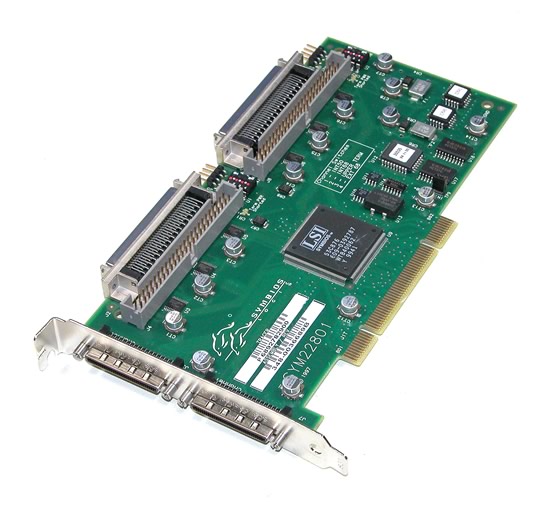- Scsi Controller Drivers For Mac Catalina
- Vmware Scsi Controller
- Scsi Driver Download
- Scsi Controller Driver Windows 10
- Pci Scsi Controller

- SCSI card maker Adaptec has released new Mac OS X-compatible drivers for several of its SCSI cards for the Macintosh. The new drivers are available for download from Adaptec's Web site.
- Release Notes 29320LPE and U320 SCSI Driver Updates Feb. 07 (PDF 32 KB) Key Differentiators Industry’s first PCIe x1 Ultra320 SCSI controller that is ideal as a SCSI disk drive and SCSI tape drive connection solution with unparalleled PCIe connectivity and industry standard compatibility.
- Linux Drivers, Mac Drivers, User Manuals, Windows Drivers: Wireless 802.11N USB 2.0 Network Adapter: Linux Drivers, Mac Drivers, User Manuals, Windows Drivers: Download: USB-802N 6 files 246193 downloads Linux Drivers, Mac Drivers, User Manuals, Windows Drivers: Wireless 802.11N USB 2.0 Network Adapter.
Scsi Controller Drivers For Mac Catalina
So I found a load of old Zip and SyQuest cartridges up in the attic, along with the SCSI drives for them. No idea what's on them, but could be some lost photos of my kids (a backup went screwy about 8 years ago).
I have a 2008 Mac Pro, and also - somewhere in the attic - a Quad G5. Does anyone know the best (ie. most cost-effective) way to see what's on the drives?
The SyQuest is a SyJet 1.5Gb, with SCSI in and out ports, while the Zip drive is a Zip 100 (ditto).
Time has mercifully blanked out all memories of having to deal with SCSI stuff (does it need special drivers?), so if anyone can help fill in the blanks...
Device drivers improve sound, graphics, networking, and storage performance. If you perform a custom VMware Tools installation or reinstallation, you can choose which drivers to install.
The set of drivers that are installed when you install VMware Tools depends on the guest operating system and the VMware product. For detailed information about the features or functionality that these drivers enable, including configuration requirements, best practices, and performance, see the documentation for your VMware product. The following device drivers can be included with VMware Tools.
Note: The choice of SCSI controller does not affect whether the virtual disk can be an IDE, SCSI, or SATA disk. Some guest operating systems, such as Windows XP, do not include a driver for the LSI Logic or LSI Logic SAS adapter.
Vmware Scsi Controller
On Windows guest operating systems whose operating system is Windows Vista or later, the VMware SVGA 3D (Microsoft - WDDM) driver is installed. This driver provides the same base functionality as the SVGA driver, and it adds Windows Aero support.
For example, Windows Server 2008 defaults to LSI Logic SAS, which provides the best performance for that operating system. In this case, the LSI Logic SAS driver provided by the operating system is used.
VMware supplies a special SCSI driver for virtual machines that are configured to use the BusLogic virtual SCSI adapter. Virtual machines do not need this driver if they do not need to access any SCSI devices or if they are configured to use the LSI Logic virtual SCSI adapter.
The driver is included as part of the VMware Tools package or comes bundled with VMware ESX/ ESXi. It is available on the host as a floppy image at /vmimages/floppies/vmscsi.flp. The driver can be used in Windows XP, Windows Server 2003, or Windows 2000.
When you install VMware Tools, a VMXNET NIC driver replaces the default vlance driver.
Scsi Driver Download
Scsi Controller Driver Windows 10
- File Introspection Driver: The File Introspection driver uses the hypervisor to perform antivirus scans without a bulky agent. This strategy avoids resource bottlenecks and optimizes memory use.
- Network Introspection Driver: The Network Introspection driver supports NSX for vSphere Activity Monitoring.
Do not delete or replace existing inbox drivers for Linux that are distributed by your OS vendors. Deleting or replacing these drivers might cause conflict with future updates to the drivers. Contact your OS vendor or OS community for availability of specific updates to drivers.
Pci Scsi Controller
See http://kb.vmware.com/kb/2073804 for information about availability, maintenance, and support policy for inbox drivers for Linux.
If you use Workstation or Fusion, you can install the Shared Folders component. With Shared Folders, you can easily share files among virtual machines and the host computer. The VMHGFS driver is a file system redirector that allows file system redirection from the guest operating system to the host file system. This driver is the client component of the Shared Folders feature and provides an easy to use alternative to NFS and CIFS file sharing that does not rely on the network. For Linux distributions with kernel version 3.10 and later, a new FUSE based Shared Folders client is used as a replacement for the kernel mode client.
VMware Tools installation include the VMware AppDefense, a security management and monitoring solution. AppDefense agent can be installed on the guest virtual machine using the VMware Tools installer. However, VMware Tools cannot install the AppDefense component automatically. You need to install the component manually.




